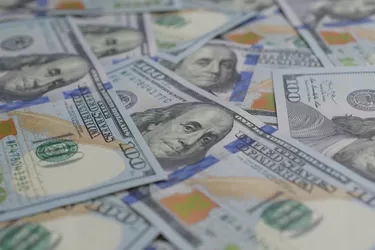
The paper found in dollar bills isn't like the paper in your printer. In one sense, it may not be paper at all. Where most paper is made with wood pulp, the paper found in printed money uses none. Instead, currency paper is mostly made up of cotton and linen, materials more commonly used for making cloth.
Tip
U.S. currency is not made of traditional paper that uses wood pulp. Among other materials, it contains cotton and linen plus a polyester security strip.
Video of the Day
The Money Paper
This cloth-like paper, sometimes called rag paper to distinguish it from the regular wood-pulp variety, is far more durable than your regular sheet white bond. Since a bill will spend its days being folded, crumpled, and stuffed into pockets, wallets, and machines, this durability is essential.
Video of the Day
The paper used in currency is unique in other ways. The paper used in money serves as more than a printing medium — it's also an important security feature. While the U.S. Treasury department makes no secret about the presence of cotton and linen in money paper, they are likely not the only two ingredients.
Fibers Added to Money Paper
When the paper is being made, at least one other ingredient is added to the mix. Fine red and blue thread-like fibers are added in, giving citizens and law enforcement a quick detail to look for when checking out a suspected fake.
Embedded Security Strips
In larger denomination bills, another security feature is added--a polyester security strip that is embedded into the paper itself. This strip has microprinting running the length of it, declaring the correct denomination of the bill. Though not visible normally, the strip can be seen by holding the bill up to the light.
Chemical Reaction Determines Counterfeit Money
The paper also has distinctive physical and chemical properties that make it easier to differentiate between a counterfeit and the real thing. Anti-counterfeit pens, used extensively by retailers and banks, are felt-tipped markers that use a special ink. When marking genuine currency paper, the ink appears light brown or yellow. When marking anything else, such as common printer paper, the mark will be a dark brown that's nearly black.
Spotting a Fake
In addition to the security thread, the blue and red fibers in the paper and the use of color shifting ink, there are also several other security features that make spotting counterfeits easier. The ink used to print a bill gives the printing a raised texture--another distinct tactile feature. That same ink is magnetic. The imagery on either side of the bill includes details too small to print on a regular inkjet printer. In every portrait, extremely small microprinting spells out "The United States of America." Every feature and detail of a bill contain these and other signs of authenticity.